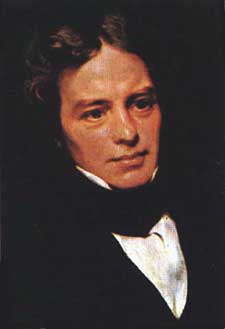Simple Electric Motor: Difference between revisions
No edit summary |
m (Text replace - "[[Category:Power,_energy_&_industry_applications" to "[[Category:Energy") |
||
| Line 14: | Line 14: | ||
[[Category:Magnetic_devices]] | [[Category:Magnetic_devices]] | ||
[[Category:Magnetic_fields]] | [[Category:Magnetic_fields]] | ||
[[Category: | [[Category:Energy]] | ||
Revision as of 17:09, 22 July 2014
In 1821, in London, Michael Faraday demonstrated the first simple electric motor, a wire carrying a current rotating around a fixed electromagnet, known as the homopolar motor.
Faraday was intrigued by the experiments of Hans Christian Ørsted discovering electromagnetism. In 1820, Ørsted demonstrated how a magnetic needle would deflect when a wire with current following through it was placed nearby. He interpreted this result to mean that electrical currents produced an magnetic field. André-Marie Ampère then demonstrated that magnetic force was circular.
Faraday created a simple motor to illustrate this phenomenon. The motor consisted of a metal wire suspended in a cup of mercury. A permanent magnet was attached to the bottom of the cup. The motor generated a magnetic field when Faraday applied current from a Voltaic Pile to the wire. The mercury conducted the electricity and made a circuit. This magnetic field interacted with the field already created by the motor’s magnet, causing a continuous circular motion from the circular magnetic force around the wire. To Faraday, this result suggested that electricity might be a force conducted by tension rather than a fluid that moved through wires like piped water.
The simple motor remained a demonstration piece rather than a practical tool, but it was the first example of a device that converted electrical current into motion. Other scientists would improve on this invention to develop the first generation of electric rotary motors in the 1820s and 1830s, including British inventors Peter Barlow and William Sturgeon and American Joseph Henry.
